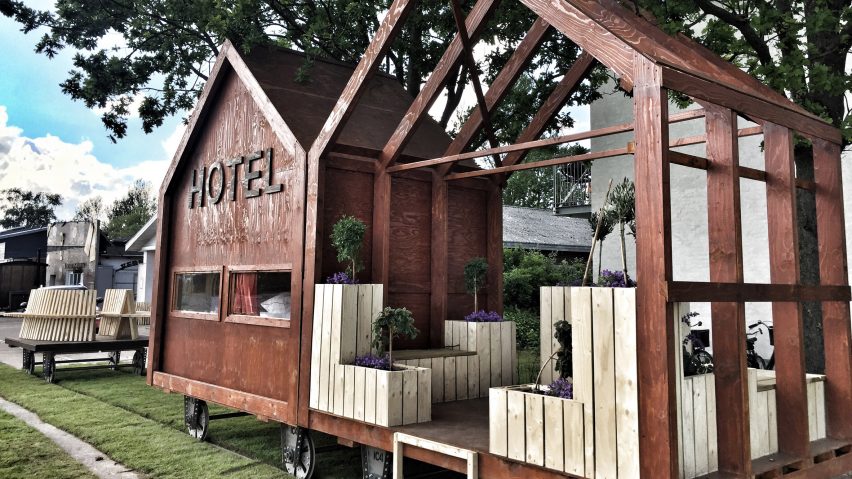A single-room hotel, a public greenhouse and a set of polling booths are just some of the unusual functions assigned to a set of train carriages designed by Danish studio AART for an old industrial area of Aarhus.
AART worked with local non-profit organisation Givisme on the design for the pop-up carriages, which were created to inject life back into an area of disused railway tracks at the edge of the city centre before it is turned into a residential development next year.
Standing at 4.5 meteres tall, the timber-frame carriages are mounted on wheels and arranged along the old tracks, which have not been in use for more than 36 years.
Hosting a variety of small boutiques as well as providing space for public amenities and activities – such as polling booths for the upcoming local elections – the plywood and pine carriages will remain open for the rest of the year.
"Like any other city, Aarhus is affected by increasing urbanisation," said the architects. "The city is growing intensively, which is also giving rise to an increasing transformation of former industrial areas into residential areas."
"This kind of urban transformation is an integral part of the daily life in the city. However, the timespan between the political decisions and the completed transformations are often long – so, why not use this timespan productively and make the best of the areas while they are being transformed?"
While AART and Givisme came up with the design for the train carriages, people of different age groups and backgrounds from across the city helped to build them, adding a valuable "community-making" aspect to the process.
"The total budget we worked with was 150,000 Danish krone," Jonas Hallberg, Givisme co-founder, told Dezeen. "All materials were free of charge though partnership deals made with local authorities, AART Architects and private companies."
More train carriages with a variety of uses are planned for the coming months. During the nearby music festival Northside, some pop-up bars and a pharmacy train carriage were created to serve festival goers.
The architects say that the carriages demonstrate how "temporary architecture can provide new perspectives on a community-based and citizen-involving urban development."
Other recent urban rejuvenation projects include a Paris basketball court painted in gradients of blue, pink, purple and orange by Ill-Studio and Pigalle, and a series of ten experimental "superbenches" by ten big-name designers that were installed in a park just outside of Stockholm.

